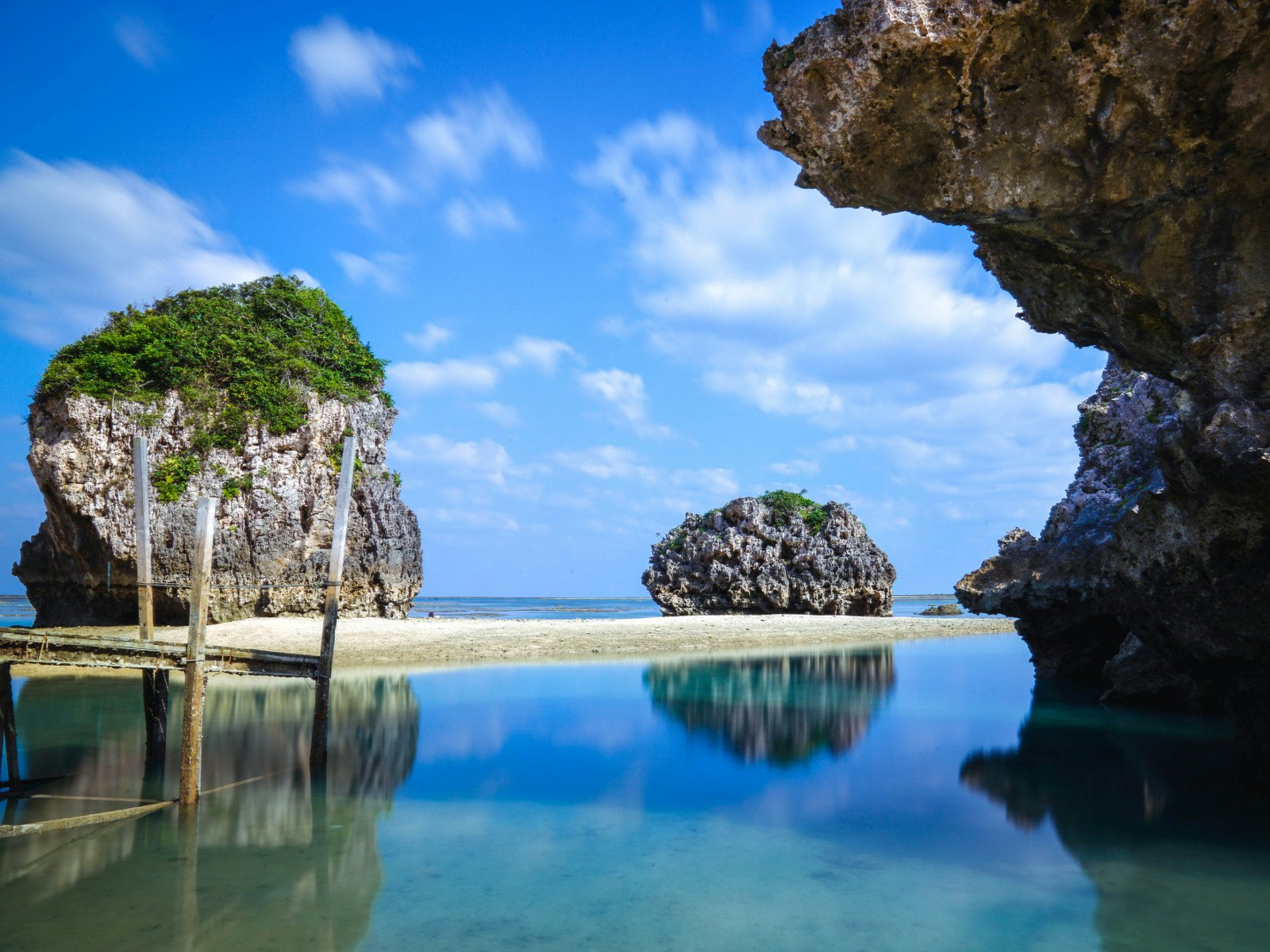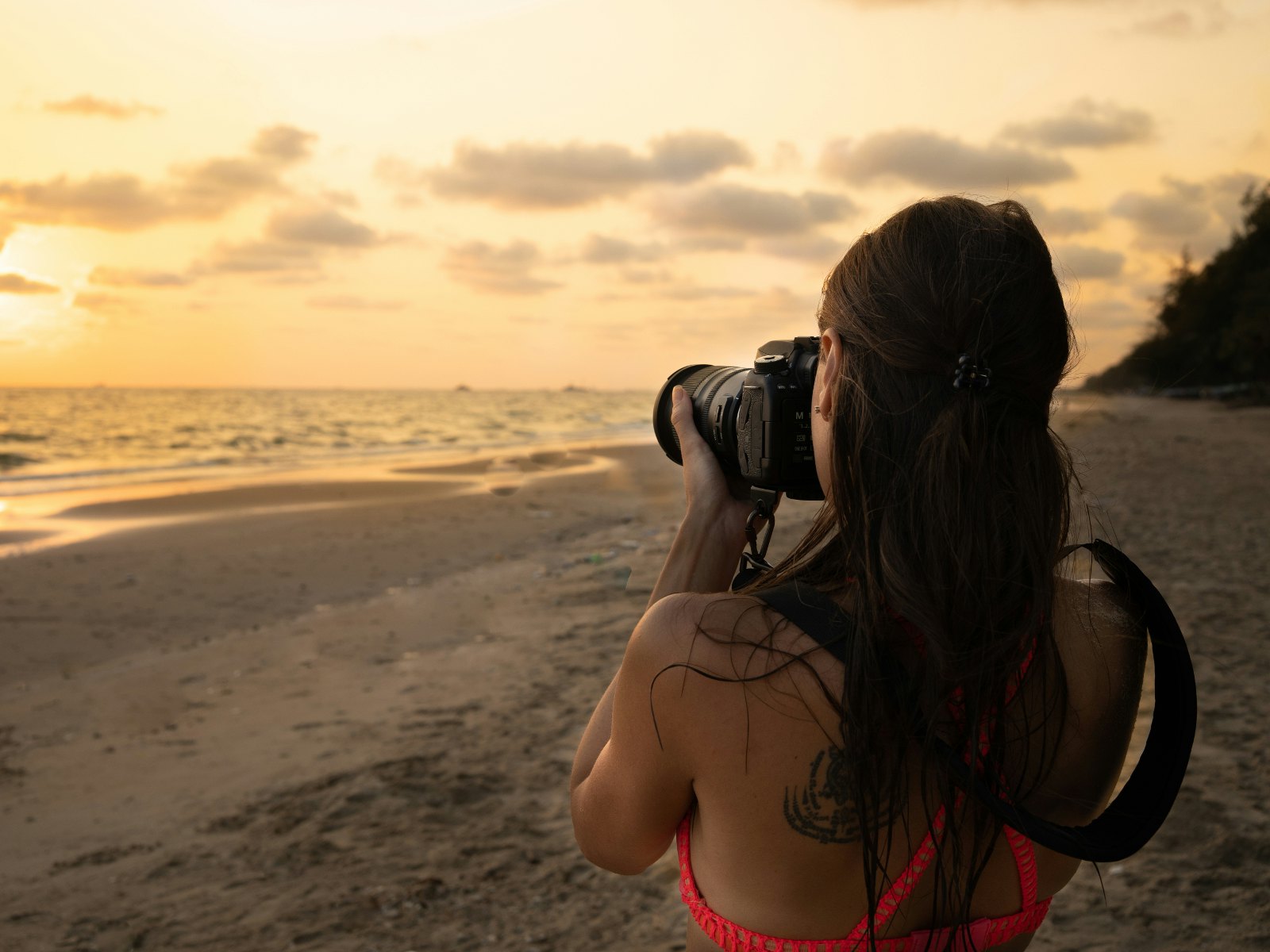
The 30 best countries, cities and regions to visit in 2025
Apr 1, 2019 • 6 min read

Sun-kissed stretches of pristine sand; shimmering cobalt and cerulean blue; jagged, ancient coastlines battered by wild, white breakers – there's no doubt that every beach has something unique to offer a photographer.
Beaches are places of extremes, with each shoreline and strand holding its own set of challenges for a snapper hoping to capture a striking moment. But the right knowledge can make the process a whole lot easier. Readjust your focus with this guide to beach photography and bag yourself some beautiful images.

A sunny scene of sprawling sand and sea is attractive to the naked eye, but the corresponding photograph can look generic – even boring. Taking a picture of a beach that stops the viewer dead in their tracks often calls for creativity. One important consideration is 'framing', which just means finding the right place to position yourself before choosing the most attractive or interesting aspects of the scene to include in your shot.
Think about what is around you. Is there a hilly ridge nearby that offers a panoramic view of the beach? Or a section of rock that is hiding interesting, unseen geological features? Maybe there are colourful shells or footprints in the sand ready for a close-up. Explore the area with your camera in hand, then decide how to best tell its story.

Change your position and experiment. Get low to the ground and shoot at eye level with the waves, or place a palm tree, outcrop or beach umbrella off centre. Having an additional subject in the frame helps to break the linear lines of sand and sea, and can add extra colour or intrigue to the shot.
Every beach is distinctive, as is every moment. A telephoto lens with a fast shutter speed (aim for at least 1/1000 second) can help you photograph a surfer riding a wave, while a wide-angle lens will let you take in bustling beach scenes full of people, which in turn will give context to your shot. The key is looking around and being ready to capture the spontaneous.

An eye for detail and creative flair are all well and good, but your chances of getting a great shot also depend on the right equipment. You don’t need to spend a fortune, but we recommend that any basic kit should include the following – a sturdy, portable tripod, a neutral density filter (1000 or 10-stop reduction is a good choice) and a polarising filter.
You may find yourself scrambling over slippery rocks and planting yourself in boggy places to capture your shots, so a tripod that can endure the elements and be carried easily is a must. Your neutral density filter limits the amount of light coming into the lens, and when combined with the tripod to keep camera movement to a minimum, allows you to open the shutter for extended periods of time even in bright, sunny conditions. Long exposures can capture the movement of the clouds and sea, resulting in images of milky, smooth skies and ethereal, misty waves. Your polarising filter helps to sharpen the image; it removes unwanted reflections, intensifies colours and creates a clarity beneath the surface of the water.

Another favourite phrase for photographers is ‘the best camera is the one you have with you’, and nowadays, it’s possible to take and edit incredible images with just a smartphone. Post-processing apps such as VSCO, Mextures and Lightroom Mobile are user-friendly and can enhance the look of an image. Mobile technology is advancing rapidly, with apps doing a decent job of mimicking the look that professionals get. One new offering, Spectre, even allows users to create a long exposure shot on their smartphone without the use of a tripod. Sharing your snaps on Instagram and Twitter is a great way to showcase your skills and spark wanderlust in your followers.

Sometimes, a photograph with people in it can be just what you’re looking for. Other times, you may want the landscape or scenery to speak for itself. Unfortunately, the world’s most beautiful beaches are hardly a secret, so getting an image free from crowds can be tricky. One option is to get there as early as possible before the tour buses pull up. This approach may even come with the added benefit of capturing the beach at sunrise. You can also stay a little later and hope that the place will become quieter as evening sets in. Known as the golden hours, these short periods after sunrise and before sunset are famously popular with photographers as the light is even, warm and soft.
Portraits work especially well during this time, and you can create some beautiful images by utilising the beach as a natural backdrop. A little flash can fill out shadows on faces during this time. If it’s the middle of the day and you can’t get a picture without people walking past, get creative. Your trusty tripod and neutral density filter will come in handy here. A long exposure often won’t capture people if they move quickly through the shot, and even if it does, the resulting image can work well, with people appearing like ghostly trails. Finding the right angle to frame a shot can also make an otherwise busy place appear empty.

If you’re looking to showcase the raw, natural beauty of a sunset on its own, make sure you are prepared ahead of time. Find the best angle for your shot and be ready, as your window of opportunity will be short. A little research goes a long way: use a weather app to get exact timings for when the sun is due to rise or set in your location. Consider a long exposure shot with the correct lighting (keep an eye on your light metre inside the camera) and always exercise caution when looking at the sun through a lens. Bracketing (when the camera takes multiple pictures at different exposures) is a good way to ensure you get the exposure right, and you can stitch the images together in post-processing.

Over the years, countless unsuspecting visitors have been surprised by the infamous ‘sneaker waves’ at Reynisfjara Beach in Iceland – despite the many signposted warnings. Even on calmer days, a dozen waves can roll sedately up on the black-sand shore before a particularly energetic one breaks free and rushes in towards the mainland. Visitors are usually advised to keep a distance of at least 30 metres; but photographers focused on the perfect shot are particularly at risk of losing track of distances, times and rising tides, so it pays to be cautious. Beautiful rock formations, plus wild ocean sprays and stray seaweed can make for supremely slippery terrain. While timing may be a key component of that spectacular snap, always take a moment to assess your environment and set up your shot safely.
From Ireland’s cold coastal gems to the baking desert dunes of southern Spain, beaches can also take their toll on your gear. Rain, wind and sun can all be issues, but a small kit consisting of pre-moistened lens cleaning wipes, an air blower and a lens brush are invaluable. Sand, especially, can wreak havoc on gear, so avoid changing lenses or memory cards at the beach where possible. Weatherproof bags allow you to rest easy knowing your kit is protected as you explore the area looking for your next shot.
Original article by Jean-Bernard Carillet. First published in June 2012.
https://shop.lonelyplanet.com/products/best-ever-photography-tips-2